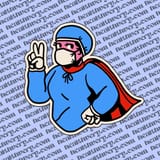Beware the Bite: Camel Spider Encounters & Your Path to Recovery
Discover the symptoms, treatment, and prevention of camel spider bites, as well as separating myths from facts about these misunderstood arachnids.

Camel spiders, also known as wind scorpions or sun spiders, have gained notoriety due to their frightening appearance and the myths surrounding their behavior. While their large size and impressive speed might make them seem intimidating, it's important to dispel some misconceptions and understand the true nature of camel spider bites.
First and foremost, despite their name, camel spiders are not true spiders. They belong to the class Arachnida, but they are not part of the spider order Araneae. Instead, they belong to the order Solifugae. This distinction is important as it helps us understand their behavior and physiology, which differ from that of actual spiders.
Camel spiders are not venomous, unlike some true spiders that possess venom glands. The primary concern associated with camel spider bites is the mechanical damage caused by their powerful jaws. Camel spiders are known to have a strong bite, using their chelicerae (jaws) to crush and consume their prey. It's important to remember that camel spiders typically prey on insects, small rodents, and other arthropods, and they do not actively seek out humans as a source of food.
However, camel spiders may bite when they feel threatened or cornered, and their curiosity could lead them to accidentally bite a person if they mistake the individual for prey. In such cases, the bite can be painful and may result in some tissue damage. It is crucial to recognize and treat camel spider bites properly to avoid complications.
If you or someone you know has been bitten by a camel spider, the first step is to clean the wound thoroughly with soap and water. Rinse the wound well to remove any debris and to minimize the risk of infection. It is recommended to apply an antibiotic ointment to the wound and cover it with a sterile bandage. Over-the-counter pain relievers can help alleviate pain, and an ice pack may be used to reduce swelling. To minimize the risk of infection, it is essential to keep the wound clean and dry, changing the bandage regularly.
While most camel spider bites result in only mild symptoms and heal without complications, it is essential to monitor the wound for signs of infection, such as increased redness, warmth, swelling, or discharge. If you suspect that the wound may be infected, or if the bite victim experiences fever, chills, or swollen lymph nodes, seek medical attention promptly. Although camel spiders are not venomous, some individuals may experience an allergic reaction to their bites. Symptoms of an allergic reaction may include difficulty breathing, hives, or swelling around the face, lips, or tongue. In such cases, emergency medical care should be sought immediately.
In conclusion, while camel spiders may look terrifying, their bites are not venomous and generally have mild symptoms. Proper care and attention to hygiene can help ensure that the wound heals without complications. However, it's essential to be vigilant and seek medical attention if any signs of infection or an allergic reaction occur. Remember that camel spiders are not aggressive towards humans, and they play a crucial role in controlling the population of other insects and small animals in their ecosystem. Respecting their space and not handling them can help to prevent bites and maintain a healthy coexistence between humans and these fascinating arthropods.





